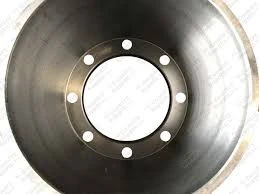
-
 Afrikaans
Afrikaans -
 Albanian
Albanian -
 Amharic
Amharic -
 Arabic
Arabic -
 Armenian
Armenian -
 Azerbaijani
Azerbaijani -
 Basque
Basque -
 Belarusian
Belarusian -
 Bengali
Bengali -
 Bosnian
Bosnian -
 Bulgarian
Bulgarian -
 Catalan
Catalan -
 Cebuano
Cebuano -
 Corsican
Corsican -
 Croatian
Croatian -
 Czech
Czech -
 Danish
Danish -
 Dutch
Dutch -
 English
English -
 Esperanto
Esperanto -
 Estonian
Estonian -
 Finnish
Finnish -
 French
French -
 Frisian
Frisian -
 Galician
Galician -
 Georgian
Georgian -
 German
German -
 Greek
Greek -
 Gujarati
Gujarati -
 Haitian Creole
Haitian Creole -
 hausa
hausa -
 hawaiian
hawaiian -
 Hebrew
Hebrew -
 Hindi
Hindi -
 Miao
Miao -
 Hungarian
Hungarian -
 Icelandic
Icelandic -
 igbo
igbo -
 Indonesian
Indonesian -
 irish
irish -
 Italian
Italian -
 Japanese
Japanese -
 Javanese
Javanese -
 Kannada
Kannada -
 kazakh
kazakh -
 Khmer
Khmer -
 Rwandese
Rwandese -
 Korean
Korean -
 Kurdish
Kurdish -
 Kyrgyz
Kyrgyz -
 Lao
Lao -
 Latin
Latin -
 Latvian
Latvian -
 Lithuanian
Lithuanian -
 Luxembourgish
Luxembourgish -
 Macedonian
Macedonian -
 Malgashi
Malgashi -
 Malay
Malay -
 Malayalam
Malayalam -
 Maltese
Maltese -
 Maori
Maori -
 Marathi
Marathi -
 Mongolian
Mongolian -
 Myanmar
Myanmar -
 Nepali
Nepali -
 Norwegian
Norwegian -
 Norwegian
Norwegian -
 Occitan
Occitan -
 Pashto
Pashto -
 Persian
Persian -
 Polish
Polish -
 Portuguese
Portuguese -
 Punjabi
Punjabi -
 Romanian
Romanian -
 Russian
Russian -
 Samoan
Samoan -
 Scottish Gaelic
Scottish Gaelic -
 Serbian
Serbian -
 Sesotho
Sesotho -
 Shona
Shona -
 Sindhi
Sindhi -
 Sinhala
Sinhala -
 Slovak
Slovak -
 Slovenian
Slovenian -
 Somali
Somali -
 Spanish
Spanish -
 Sundanese
Sundanese -
 Swahili
Swahili -
 Swedish
Swedish -
 Tagalog
Tagalog -
 Tajik
Tajik -
 Tamil
Tamil -
 Tatar
Tatar -
 Telugu
Telugu -
 Thai
Thai -
 Turkish
Turkish -
 Turkmen
Turkmen -
 Ukrainian
Ukrainian -
 Urdu
Urdu -
 Uighur
Uighur -
 Uzbek
Uzbek -
 Vietnamese
Vietnamese -
 Welsh
Welsh -
 Bantu
Bantu -
 Yiddish
Yiddish -
 Yoruba
Yoruba -
 Zulu
Zulu
Understanding the Mechanics of Drum Brake Systems in Automotive Applications
Understanding Drum Brake Wheels Essential Components of Vehicle Safety
When it comes to vehicle safety, one cannot overlook the importance of an efficient braking system. Among the various types of brakes used in automobiles, drum brakes hold a significant place, particularly in certain models of cars and trucks. This article will delve into the mechanics of drum brake wheels, their advantages, disadvantages, and their crucial role in vehicle safety.
A drum brake system consists of several components including the brake drum, brake shoes, wheel cylinder, and return springs. When the driver presses the brake pedal, hydraulic pressure is created in the wheel cylinder, causing the brake shoes to expand against the inner surface of the brake drum. This friction slows down the wheel, thereby reducing the vehicle's speed or bringing it to a complete stop. The design of the drum brake allows it to provide a strong and consistent braking force, which is vital for safe driving.
One of the primary advantages of drum brakes is their compact nature. Because they are enclosed, drum brakes are less susceptible to various environmental conditions such as rain, mud, and snow. This containment keeps the braking components clean and functioning effectively. Additionally, the design of drum brakes allows for a larger braking surface, which can enhance braking performance, especially in heavier vehicles. This feature is why many commercial vehicles, such as buses and trucks, still utilize drum brakes on their rear wheels.
Another notable benefit of drum brakes is their cost-effectiveness. Manufacturing and maintenance of drum brake systems tend to be less expensive compared to disc brakes. For budget-conscious consumers or manufacturers looking to keep expenses low, drum brakes represent an economically viable option. Furthermore, drum brakes often require less frequent replacement of brake pads and components, leading to lower long-term maintenance costs.
drum brake wheel

However, drum brakes are not without their disadvantages. One of the biggest limitations is their performance in high-performance scenarios. Drum brakes can experience heat buildup during extended use, leading to brake fade where the braking efficiency diminishes. This is problematic in situations requiring heavy braking, such as emergency stops or driving downhill. As a result, many modern high-performance vehicles have shifted to disc brakes, which better dissipate heat and provide more responsive braking.
Additionally, the complex design of the drum brake system can make repairs more cumbersome. Unlike disc brakes, which are relatively easy to access and service, drum brakes require more effort to disassemble and repair. This can lead to increased labor costs and time during maintenance, something that vehicle owners must consider.
Despite these drawbacks, drum brakes remain an essential element in the automotive world. Their reliability and effectiveness in various conditions, coupled with affordability, ensure their continued use in many vehicles, particularly those designed for everyday commuting or commercial use. For instance, even some of the latest models of family cars continue to incorporate drum brakes on the rear wheels due to their practicality and efficiency.
In conclusion, while drum brake wheels may not be the flashiest component of a vehicle, their role in safety and efficiency is undeniable. Understanding their function and the benefits they offer can help consumers make informed choices when selecting a vehicle. As technology advances, the automotive industry may continue to innovate and improve braking systems, but drum brakes will likely still hold a place in our vehicles for years to come. Whether you're a car enthusiast or just an everyday driver, appreciating the intricacies of drum brake wheels is part of understanding vehicle safety as a whole.
-
Rear Drum Brakes Maintenance TipsNewsAug.04,2025
-
Key Components Affecting Brake Drum FunctionNewsAug.04,2025
-
Important Inspection for Truck Drum BrakeNewsAug.04,2025
-
How to Prepare for Changing Rear Drum BrakesNewsAug.04,2025
-
Essential Tools for Cleaning Drum Brakes ProperlyNewsAug.04,2025
-
Brake Drum Function GuideNewsAug.04,2025
-
Safety Features of Red Brake DrumsNewsAug.01,2025
